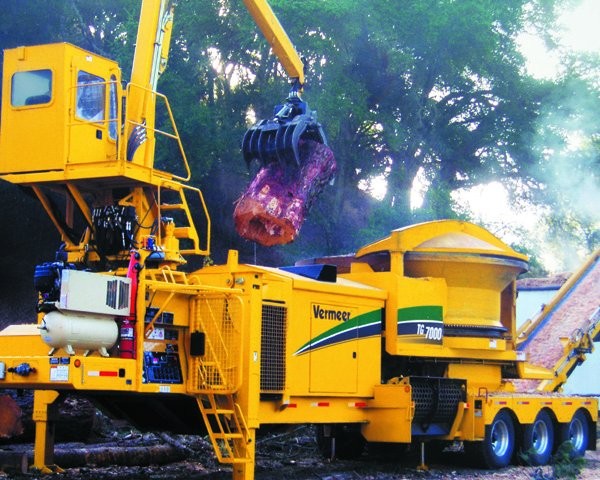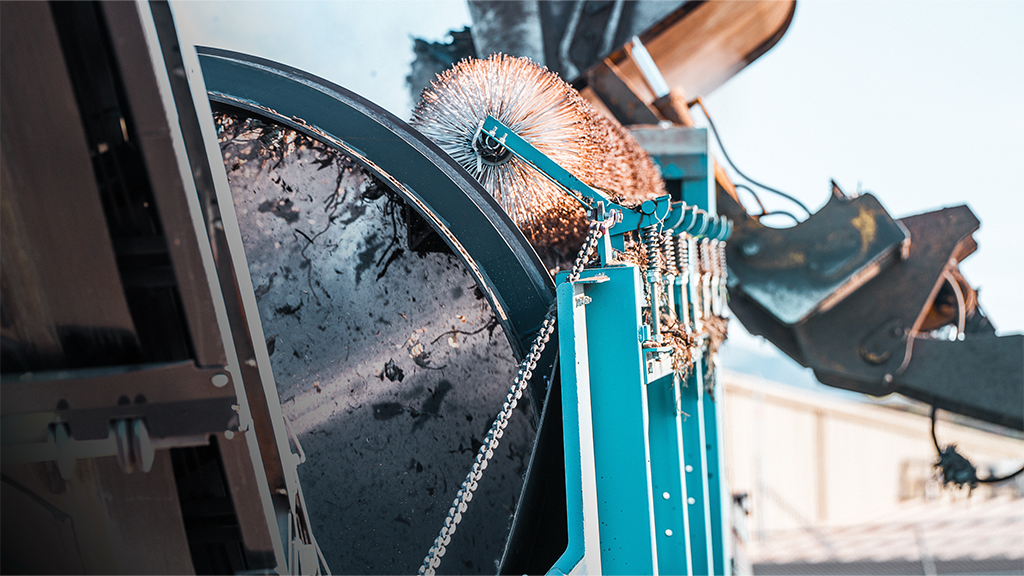Wood Grinders: making the purchase
Considering cost of operation may save buyers more than the price difference

Written By: Greg Ehm
When purchasing a grinder, contractors and municipalities look for a product that is reliable, offers features desired by the buyer and is the best overall value. However, too many times buyers get caught up in the price of the machine versus the cost of ownership and operation.
The purchase price, in most cases, is a small factor in the overall cost of a grinder during its estimated 5- to 7- year life span. The true costs begin the day the machine goes into operation, and without some research to truly understand what it will cost to operate the machine on an hourly and / or cubic-yards-produced basis, a contractor or municipality may experience buyer’s remorse.
“A number of contractors and municipalities look for the lowest possible price within a horsepower range when purchasing a grinder,” says Jerry Roorda, an environmental solutions specialist for Vermeer Corporation. “They do not take into account the cost of ownership and operation.”
So what exactly are the costs of ownership and operation? According to Roorda the cost of ownership is the expense incurred by the municipality or contractor whether the machine is working or not. This includes the purchase price, finance charges, depreciation, and projected hours of use within the depreciation period, insurance and the cost of operation. This is reflected on a per-hour basis.
The cost of operation also includes maintenance and operation expenses such as oil, filters (engine and hydraulic), grease, fuel, and wear items like cutters, screens, belts, augers (if so equipped), the anvil and labor. The cost of operation is closely tied to the production of the machine giving you a finished unit (tons, cubic yards and cubic meters) or hourly cost.
Cost of operation can and does affect the overall cost of ownership. If a more expensive grinder greatly reduces your day-to-day operation cost and gives you a lower-cost finished product, over the life of the grinder the higher-cost unit may be a better overall value. The reason — the higher-cost grinders feature design differences over the less expensive unit that may help enhance productivity.
“This information can make a significant impact to the bottom line of a contractor or municipality,” says Roorda.
Tools available
Many manufacturers offer software tools to help contractors and municipalities determine the cost of ownership and operation on a specific grinder. In fact, these tools can also help a customer compare the cost of ownership and operation side-by-side between different horsepower units, tub to horizontal grinders, and different brands of grinders.
“We have a worksheet that helps the customer determine the cost of ownership and operation,” says Roorda. “The worksheet provides the customer with a baseline of what their projected costs are going to be on an annual basis and over the lifetime of the machine. It’s not a guarantee to build a business plan from, but it does provide the customer with valuable information.”
Roorda will meet with the customer and use their actual numbers (fuel, labor, wear costs, etc.) to determine the cost of ownership and operation. In cases where a customer may be purchasing their first grinder, Roorda will use data from comparable operations, based on more than five years of data collection, to create an estimate. Bottom line — the results are only as good as the information the customer provides, so it benefits the customer to be as factual as possible.
Rubber hits the road
Roorda explains that the majority of the ownership and maintenance (oil changes, etc.) costs are going to be the same from one grinder to the next. Where the differences come into play is in wear parts and productivity.
For example, let’s suppose a customer is deciding between two competitive grinders and the purchase price for Brand A is $100,000 more than Brand B. But after careful examination the worksheet tells a different story. Brand B, while less expensive, has a unit cost of $1.30 per finished yard while Brand A’s unit cost is only $.50 per finished yard. That may be a significant cost savings over the useful life of the machine, depending on the yards of finished material produced annually.
“In today’s economy it’s vitally important to know this information,” says Roorda. “Wood waste has become more of a revenue stream for contractors and municipalities compared to five years ago. No matter how you look at it, efficiency and cost of operation are going to determine whether you’re going to make money or not.”
Why the difference
Design features can make a significant impact on grinder maintenance and productivity. So Roorda encourages customers to take a close look and understand how the grinder is built and how these features can benefit their operation.
Roorda also suggests customers evaluate the drive mechanism on grinders as well. Most manufacturers offer a wet clutch, fluid coupling or torque converter drive system. Some of the drive systems are more efficient than others in that they provide a direct connection between the power source and the drum. These are much more efficient and may allow you to run a lower-horsepower grinder, but realize the same efficiency as a higher- horsepower unit. However, the lower-horsepower unit will consume fewer gallons of diesel fuel per hour while producing the same amount of finished product.
As the saying goes, you can pay me now or pay me later, but by looking beyond the purchase price you can help avoid buyer’s remorse and limit lost production.
Vermeer Corporation
www.vermeer.com



